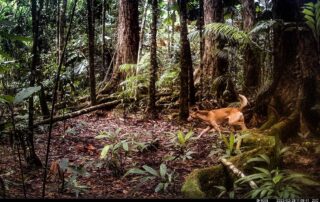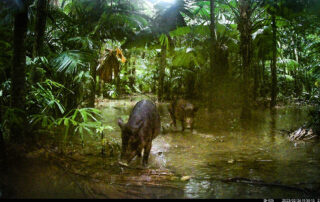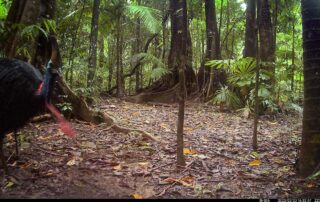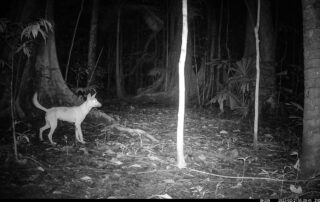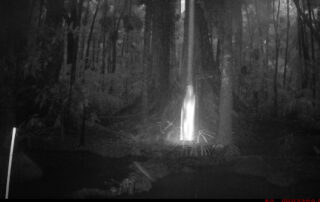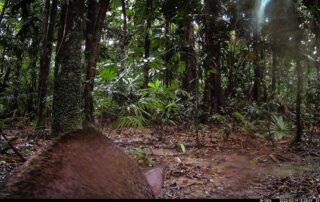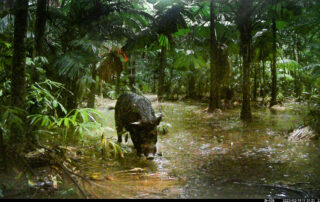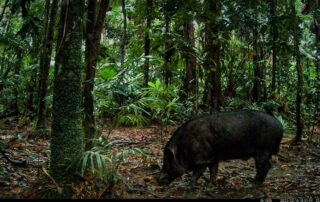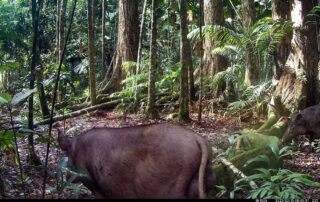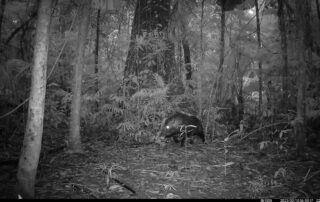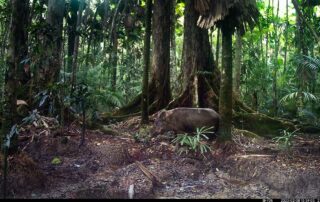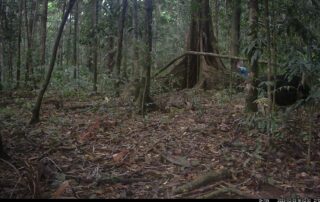Camera Traps – February 2023 accrued 323-cassowary sightinigs, 100-dingoes and 148-feral pigs. Against the cumulative monthly average, cassowary numbers rose by 193%, dingoes increased by 203% and feral-pig numbers also grew by 35%. Against February 2022, cassowaries were 88% higher, dingo numbers soared by 1,110% and feral-pigs rose by 35%.
Image highlights from February 2023
Multiple interests in a hollow-log …
Manu and his three remaining chicks, Leonardo, Michelangelo and Raphael.
Healthy dingo family checking out the den of neighbouring family
Big boar gazing into the entrance of a maternity hollow used last breeding season by both pigs and dingoes.
Daintree Rainforest custodianship
Daintree Rainforest is inundated by a seemingly endless troupe of environmental campaigners, marching to the beat of ‘Saving the Daintree’. Over the last financial year alone, three environmental foundations operating out of northern NSW and southeast QLD reported employee expenses of $1.4-million from $5.6-million, donated to that very purpose!
In 1988, around 92% of this area was World Heritage-Listed and over recent decades, additional tens-of-millions of taxpayers’ dollars have been allocated to acquire as much of the outstanding 8% freehold portion as possible, leaving around 5% of the total area under private-ownership. This 5% is the only part of the Daintree Rainforest that can possibly be acquired, on a property-by-property basis, and ‘saved’ by the hollow promises of campaigners and yet, it is this skerrick of remaining freehold property, which constitutes the ever-diminishing, rate-paying Daintree Coast Community.
Donors should be aware that every property purchased in pursuit of this so-called ‘protection’, is actually taken from community custodianship. The ongoing care of these properties, from trespass, illegal occupation, poaching and the proliferation of feral pests and weeds, is taken from the local community, with all its knowledge and expertise, and put under the authority of a board of directors who meet very infrequently and reside thousands of kilometres away from the acquired lands.
One of the most important points of difference that distinguish Daintree Rainforest Foundation LTD from this flood of outside campaigners and not-for-profits, is that, constitutionally, it must perform its functions in a way that is consistent with the protection of inhabitant people, who are not only constituent parts of the legislated definition of ‘environment’, they are also its sole caretakers and the exclusive repository of local knowledge.
People with a genuine interest in the Daintree Rainforest should visit when they can ensure that they support the custodial community’s achievement of world’s best-practice. Tours and accommodation within the environmental treasure directly benefit the local community’s conservation purpose, whilst day-tours from accommodation centres benefit the communities that provide the accommodation and mostly by-pass the people within the environment being visited. Discerning travellers should ensure that their travel dollars benefit the environmental attraction and the people that have a direct care for it. The same consideration should be given to charities, by determining where those donated dollars go, in support of the custodial community or against it.
Daintree Rainforest Foundation Ltd has been registered by the Australian Charities and Not-for-profits Commission and successfully entered onto the Register of Environmental Organisations. Donations made to the Daintree Rainforest Fund support the Daintree Rainforest community custodianship and are eligible for a tax deduction under the Income Tax Assessment Act 1997.


